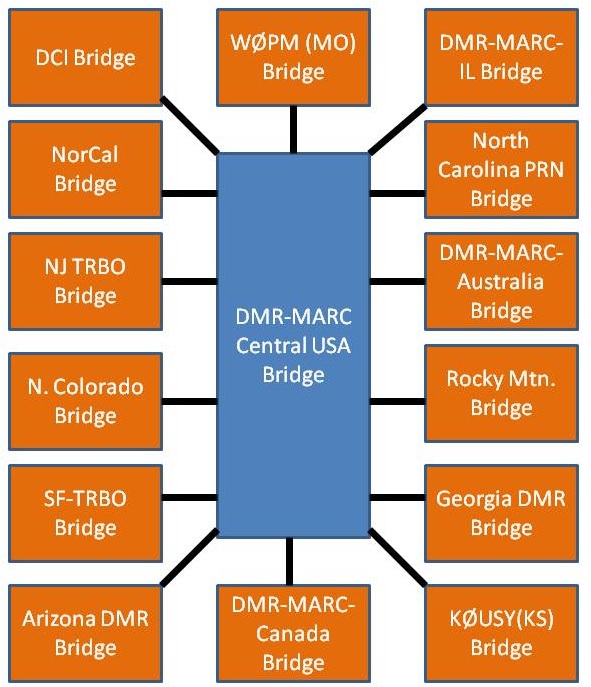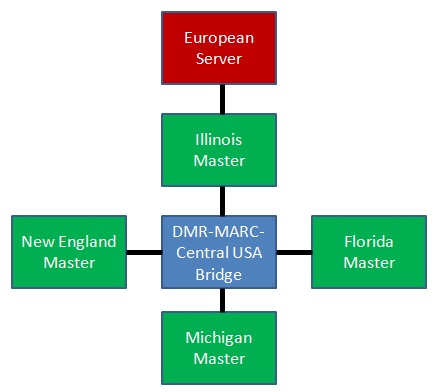
|
How does this all work?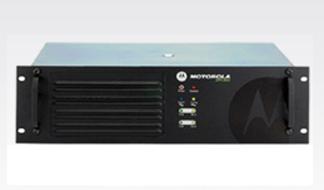
MOTOTRBO
(a.k.a. TRBO) is a Motorola Solutions branded DMR Radio.
MOTOTRBO has a few more
features than a standard DMR radio including IP Site Connect, which we use to network our
repeaters in the USA, Germany, Australia, New Zealand, South Africa, Spain, Canada, Switzerland, Austria, Finland, Sweden,
Italy, Mexico, the United Kingdom, Romania, Chile, and The Netherlands, Hong Kong, Brazil, and France. When one person transmits, multiple repeaters
are keyed up on our network (like a reflector) without the user having to fumble through finding node numbers
or access codes. All of our repeaters are networked 24/7. Our network is 100% DMR digital with no analog connections.
DMR (Digital Mobile Radio)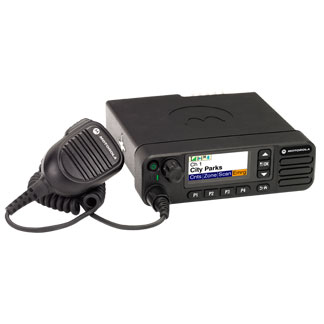
DMR is an open and published international digital radio standard that specifies the 2-slot (channel) TDMA communications. DMR is amateur radio's newest digital protocol. DMR radios are produced by several manufacturers and they all work on our TRBO system as long as they are Tier II compliant, as most are. DMR is not compatible with Icom's D-Star technology. Competition between manufacturers is a big reason why DMR radio prices are fair. DMR is here to stay since it is not a single manufacturer technology. 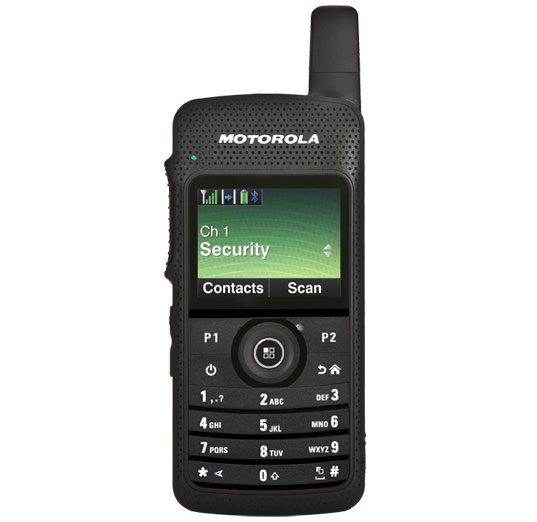
DMR also satisifies the FCC's narrowbanding mandate by being 6.25 kHz equivalent. It's actually more spectrum efficient than other 6.25 kHz modes since no guard band is needed for the two channels. Think of DMR as 1/3 the channel bandwidth of a 25 kHz analog signal with TWICE the number of voice channels. It also offers extended battery life, and did we mention it has superior voice quality over other digital voice modes? Another advantage of most DMR radios is supurb RF performance. Many DMR radios have to satisfy both ETSI and TIA specs to perform in the most challenging RF environments. When you use a commercial radio for amateur radio you'll notice it has better intermod rejection, better selectivity, less spurious emissions, and it is mechanically a very well designed radio. Tired of the "turkey talk" and loss of signal sync from older digital technologies? Well, DMR (and in particular MOTOTRBO) has 2 layers of packet recovery: Forward Error Correction and Cyclic Redundancy Codes. DMR has better RF coverage than older digital technologies. Could there be more? Of course there is! Motorola DMR radios feature roaming. Roaming works similarly to mobile/cellular phone technology. If you program your radio properly it will find the repeater with the best signal in your local area and without your intervention, it will roam to that repeater. Lately, distracted driving and safety have become very important issues. MOTOTRBO DMR allows you to focus your attention on driving and not on changing repeater channels. Roaming is used extensively in Northern California, New England, and Chicagoland. How many DMR repeaters and users are there?
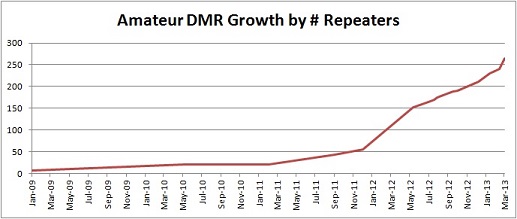
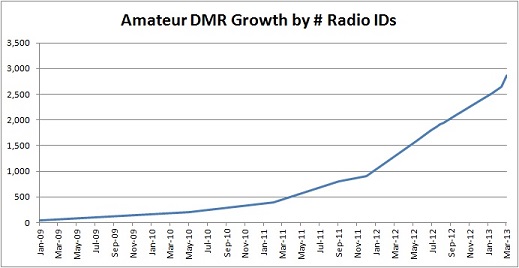
Courtesy KB0ZZT Recommended RadiosThe C-Bridge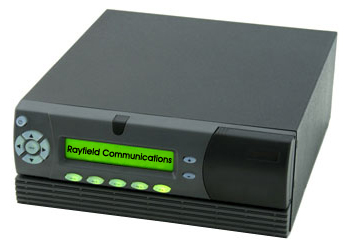
Our network is connected to several networks of repeaters
via
Rayfield Communications' C-Bridge. So, on our network you have access to nearly 185
repeaters simultaneously when you key up on the networked time slot! In the Summer of 2013 we also introduced a new Spanish language worldwide talkgroup. Contact us if you would like to join.
I'd like to present this to my club. Can you help?Sure! Download the brief presentation we used at Dayton and convince your club that a TRBO repeater will move them into the 21st century of digital communications! Then apply to join our worldwide network. DMR-MARC User Experiences"MotoTRBO outperforms similar FM coverage, sounds excellent by far over the other digital modes and full duplexes incredibly well. Networking the repeaters is simple, very close to plug n play. While costs are higher than ham-only radios that we are all generally using, the used radio market is not overly expensive considering you will have a narrow-band capable analog and digital radio useful for GMRS, commercial, public service, MURS, Itinerant, etc. TRBO simply brings more enjoyment to hamming and more life to repeaters that seems to have diminished on the FM repeaters in recent years."Mike Shirley, WB6WUI Mazama, WA USA "MotoTRBO on the amateur band has made amateur radio exciting for me again! After barely being a part of the hobby for the better part of 10 years, this new media has engulfed me!" Miguel Lombana, KD4IML Goodyear, AZ USA "I was introduced to MotoTrbo at Field Day 2011 by Jeff, KØJSC, and was instantly hooked! A week later I had my first HT and had it programmed by Reid, NØRC, in time for a vacation trip to the east coast where I met additional Trbo users and enjoyed being ”walk-about” in Washington, D.C. and making contacts worldwide! I now have an XPR-4550 (mobile), an XPR-4300 (base), the XPR-6500 (HT), and am working quickly to put the first VHF MotoTrbo repeater on the air in Kansas City along with a UHF machine east of the city! The DMR-MARC network and community of users has been incredibly helpful and welcoming! Now I’m getting started as one of the NCS operators on the Saturday DMR-MARC Worldwide Net. MotoTrbo and DMR-MARC are WHERE IT’S AT! GET ON BOARD!!!" Jim Duncan, KUØG Warrensburg, MO USA Frequently Asked QuestionsHow do I get an amateur radio license?All stations using our network must have a valid amateur radio license. Choose a country below to find out how to get the license. It's easy and inexpensive! Other TRBO Networks and Repeater GroupsDiscussion GroupsUser Tips |
|
Copyright © DMR-MARC. All Rights Reserved. Privacy Policy |
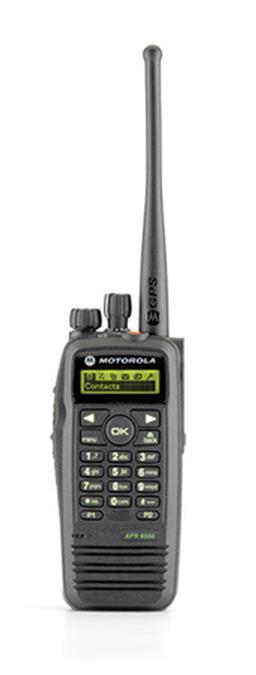 Our network has some innovative features such as 2 slot communications, location finding,
and text messaging capabilities. DMR, as you will read more about below, supports 2 time-slotted
channels from one repeater. Many of our repeaters have time slot 1 linked to the national and international networks and
use time slot 2 for local and regional communications. This means each repeater supports 2 unique voice channels at the same time!
Our network has some innovative features such as 2 slot communications, location finding,
and text messaging capabilities. DMR, as you will read more about below, supports 2 time-slotted
channels from one repeater. Many of our repeaters have time slot 1 linked to the national and international networks and
use time slot 2 for local and regional communications. This means each repeater supports 2 unique voice channels at the same time!
